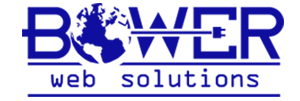Glossary of SEO Terminology
Site Title
Your content has a name! There’s no point in creating all of that good page content and not giving it a name. That’s like having a few of the same breed of dogs and naming them 1, 2, and 3- no one can tell the difference! With your page title, you’re allowing search engines like Google, Yahoo!, and Bing to classify your page and display its link with a catchy, concise phrase.
You’re also creating a clean visual interface that your web browser can work with. In the very top space above your browser’s search bar, your Page Title will be displayed. Also, your tabs will display the page name so if someone is navigating around their browser, they’ll know which one is your page!
Meta Description
The meta description is the brief content that’s shown under your big link (Site Title) on a search engine like Google, Yahoo!, or Bing. This makes your page stand out amongst the others that might have similar titles to you. You can help a searcher choose your page by filling him in on what he might find out by choosing your page. Let them know why your page is the best!
These are supposed to be short- so don’t ramble on and get to your point. If someone is searching for a page on Newfoundland dogs, give them a description of them in your meta (not too much or they won’t even click!). A short description, such as: “Newfoundlands are large black dogs that are family-friendly and complacent. Great dogs for hiking or for laying on the couch.” This provides enough information to show that you know your fair share about Newfoundlands, and that they can learn more on your page.
Domain Authority
This is a measure of how important your website is to the world wide web. Domain authority takes into account things like page views, number of links to your website (on other websites), and how relevant those ‘other websites’ are. Once your page rank is determined, search engines will index this information. Then, they will assess this rank when placing you in order of relevancy on their search engine results pages. To get to the top, try to get 10/10 on your Domain Authority!
You can take steps to be popular on the website. That is why developing content marketing, social media advertising, and other SEO optimization techniques are so vital. Read up on these new and booming ways to advertise your website.
Mobile Optimization
Mobile optimization is all about the transferal of your desktop website’s layout, content, and functionality onto mobile device browsers. This means your site needs to adjust for different screen sizes and a smartphone browser’s compatibility with your web page. This may mean you have to create a completely new mobile web page made specifically for smaller screens and for people who are viewing your site on-the-go.
Keeping your audience in mind is mighty important. People who are running around on their phones are always up to something else. They probably won’t have time to sit back and waste their precious time trying to find their way through your website. Let them have simple access to your most important pages/functions by optimizing your mobile device compatibility!
Google Indexed Pages
Google is like a giant Internet book, so you can only imagine how huge its index is. It stores all of the information from websites and determines if it likes your page or not. If it does, it respects your site as one that is useful for their searchers and will display it as results.
Using keywords and content marketing can get your website indexed more by Google. Research these things on how to be most effective and incorporate it into your website!
Bing Indexed Pages
Yahoo! Indexed Pages
Sitemaps
You can confuse a search engine or a visitor by having an unorganized layout. Menu’s that lead to dropdown bars should all be appropriately aligned. However, the sitemap is the underlying organization, which would be a page that groups together your pages (in layout) with their URL showing. This way, Google can check out your site more effectively. It can gather all of this information in one spot. Now, they’ll index you even more!
Google Analytics
Google Analytics is a web analytics service that acts like a secretary for your website. It looks at how many people are coming to your site, what they’re clicking, how long they stay, and how many times they’ve viewed your website in a day. It can even track where these clicks came from. Now, I’m pretty good at tracking, but Google is great.
Page Size
Your website is ranked by Google on how fast it loads. A lot of this is up to the amount of content/material on the page including visuals and page layout. You want you website to load as fast as possible and get up in the rankings. Don’t have too many links to other pages or files- this requires more and more http connections. This can affect how much Google likes your page (where you’ll end up in search results).
H1 Tags
The H1 tag is the big headline that is on top of your content. It is essentially your page’s way of telling viewers what they can find on that page. In addition, just like using keywords high in your content (sub-header, first paragraph, etc.), this will help your search engine results. It is indexed by Google and although not the most important aspect, it will definitely help. Why not?
Alt Tags
Alt Tags are text that will specify what the content of an image is- it is the substitute. Instead of the image, your readers will see the alt tag, the description of your image. It’s important to label all of your images in case something goes wrong, so that the viewer has some context of what the image is. I guess they can always use their imagination.
